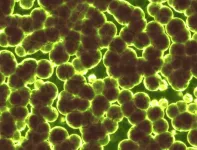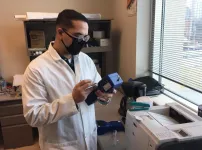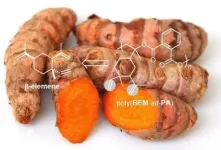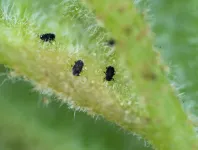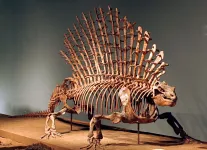The implications of swollen lymph nodes following COVID-19 vaccination
Experts offer guidance to reduce false positive tests and avoid unnecessary biopsies.
2021-03-02
(Press-News.org) BOSTON - Lymph nodes in the armpit area can become swollen after a COVID-19 vaccination, and this is a normal reaction that typically goes away with time. Radiologists at Massachusetts General Hospital (MGH) who recently published an approach to managing this situation in women who receive mammograms for breast cancer screening in the American Journal of Roentgenology have now expanded their recommendations to include care for patients who undergo other imaging tests for diverse medical reasons. Their guidance is published in the Journal of the American College of Radiology.
"Our practical management plan extends the impact of our recommendations to the full spectrum of patients having imaging tests after vaccination," says lead author Constance Lehman, MD, PhD, chief of Breast Imaging, co-director of the Avon Comprehensive Breast Evaluation Center at MGH, and professor at Harvard Medical School.
Lehman and her colleagues--from multiple subspecialties in radiology--note that as COVID-19 vaccination programs ramp up, radiologists should expect to see increasing numbers of patients who show swollen lymph nodes on imaging exams. They recommend that imaging centers document COVID-19 vaccination information--including the date(s) of vaccination, the location of the injection site, and the type of vaccine--on all patient forms and ensure that this information is easily available to radiologists at the time the image is interpreted.
In most cases, no additional imaging tests are needed for swollen lymph nodes after recent vaccinations unless the swelling persists or if the patient has other health issues. Additional tests may be warranted in cases where there was a heightened concern for cancer in the lymph nodes before the imaging test was performed. "In a patient with a recent cancer diagnosis, the patient's full care team and the radiologist can work together to determine how best to manage nodes that appear abnormal on imaging after a recent vaccination. That way, they can tailor care to the individual patient," says Leslie Lamb, MD, breast imaging specialist at MGH and co-author of the study.
Radiologists' communication with clinicians and patients should stress the importance of avoiding delays in either vaccinations or recommended imaging tests to ensure their optimal care throughout the pandemic. "Advanced planning can support our patients to feel confident and safe to receive their vaccinations as well as undergo recommended imaging in their usual care," says Lehman.
The team's management recommendations will continue to be updated as more data are available to guide best practice.
INFORMATION:
About the Massachusetts General Hospital
Massachusetts General Hospital, founded in 1811, is the original and largest teaching hospital of Harvard Medical School. The Mass General Research Institute conducts the largest hospital-based research program in the nation, with annual research operations of more than $1 billion and comprises more than 9,500 researchers working across more than 30 institutes, centers and departments. In August 2020, Mass General was named #6 in the U.S. News & World Report list of "America's Best Hospitals."
ELSE PRESS RELEASES FROM THIS DATE:
2021-03-02
A new study published today in the journal Geophysical Research Letters used NASA's ice-measuring laser satellite to identify atmospheric river storms as a key driver of increased snowfall in West Antarctica during the 2019 austral winter.
These findings from scientists at Scripps Institution of Oceanography at the University of California San Diego and colleagues will help improve overall understanding of the processes driving change in Antarctica, and lead to better predictions of sea-level rise. The study was funded by NASA, with additional support from the Rhodium Group's Climate Impact Lab, a consortium ...
2021-03-02
CLEVELAND - Researchers from Cleveland Clinic's Global Center for Pathogen Research & Human Health have developed a promising new COVID-19 vaccine candidate that utilizes nanotechnology and has shown strong efficacy in preclinical disease models.
According to new findings published in mBio, the vaccine produced potent neutralizing antibodies among preclinical models and also prevented infection and disease symptoms in the face of exposure to SARS-CoV-2 (the virus that causes COVID-19). An additional reason for the vaccine candidate's early appeal is that it may be thermostable, which would make it easier to transport and store than currently authorized COVID-19 ...
2021-03-02
There's more to taste than flavor. Let ice cream melt, and the next time you take it out of the freezer you'll find its texture icy instead of the smooth, creamy confection you're used to. Though its flavor hasn't changed, most people would agree the dessert is less appetizing.
UC Santa Barbara Professor Craig Montell and postdoctoral fellow Qiaoran Li have published a study in Current Biology providing the first description of how certain animals sense the texture of their food based on grittiness versus smoothness. They found that, in fruit flies, a mechanosensory channel relays this information about a food's texture.
The channel, called TMEM63, is part of ...
2021-03-02
UPTON, NY--Physically confined spaces can make for more efficient chemical reactions, according to recent studies led by scientists from the U.S. Department of Energy's (DOE) Brookhaven National Laboratory. They found that partially covering metal surfaces acting as catalysts, or materials that speed up reactions, with thin films of silica can impact the energies and rates of these reactions. The thin silica forms a two-dimensional (2-D) array of hexagonal-prism-shaped "cages" containing silicon and oxygen atoms.
"These porous silica frameworks are the thickness of only three atoms," explained Samuel Tenney, a chemist in the Interface Science and ...
2021-03-02
AMES, Iowa - Vaccines are an important tool in fighting porcine reproductive and respiratory syndrome (PRRS), but the fast-mutating virus that causes the disease sometimes requires the production of autogenous vaccines tailored to particular variants.
The production of autogenous vaccines depends on the ability of scientists to isolate the virus, but sometimes that's a tricky process. A new study from an Iowa State University researcher shows that a new cell line may offer a better alternative to the cell line most commonly used to isolate the PRRS virus. That could lead to more reliable processes for creating autogenous vaccines, but most autogenous vaccine producers would have to make dramatic changes to their processes ...
2021-03-02
For nearly a century, improvement in human healthcare has depended heavily on the efficiency with which we can treat bacterial diseases. But today, antibiotic resistance--the ability of certain mutant super-bacteria to block out antibiotics--poses a major threat to healthcare, food security, and overall social development worldwide, threatening to upend much of the progress our civilization has achieved.
Scientists are now urgently attempting to tackle this problem from various angles. Professor Yunho Lee at Gwangju Institute of Science and Technology (GIST), Korea, whose contribution is published in the American Chemical Society's Environmental Science and Technology, is looking at it from the point of view of his field of research--wastewater ...
2021-03-02
If you're looking for an indoor space with a low level of particulate air pollution, a commercial airliner flying at cruising altitude may be your best option. A newly reported study of air quality in indoor spaces such as stores, restaurants, offices, public transportation -- and commercial jets -- shows aircraft cabins with the lowest levels of tiny aerosol particles.
Conducted in July 2020, the study included monitoring both the number of particles and their total mass across a broad range of indoor locations, including 19 commercial flights in which measurements took place throughout ...
2021-03-02
Finding innovative and sustainable solutions to our material needs is one of the core objectives of green chemistry. The myriad plastics that envelop our daily life - from mattresses to food and cars - are mostly made from oil-based monomers which are the building blocks of polymers. Therefore, finding bio-based monomers for polymer synthesis is attractive to achieve more sustainable solutions in materials development.
In a paper published in ACS Sustainable Chemistry & Engineering, researchers from the Kleij group present a new route to prepare biobased polyesters with tuneable properties. The researchers ...
2021-03-02
Insects can reprogram plant growth, transforming ordinary plant parts into intricately patterned shelters that are safe havens for feeding and reproduction.
These structures, called galls, have fascinated biologists for centuries. They're crafted by a variety of insects, including some species of aphids, mites, and wasps. And they take on innumerable forms, each specific in shape and size to the insect species that's created it - from knobs to cone-shaped protrusions to long, thin spikes. Some even resemble flowers.
Insects create galls by manipulating the development of plants, but figuring out exactly how they perform this feat "feels like ...
2021-03-02
The backbone is the Swiss Army Knife of mammal locomotion. It can function in all sorts of ways that allows living mammals to have remarkable diversity in their movements. They can run, swim, climb and fly all due, in part, to the extensive reorganization of their vertebral column, which occurred over roughly 320 million years of evolution.
Open any anatomy textbook and you'll find the long-standing hypothesis that the evolution of the mammal backbone, which is uniquely capable of sagittal (up and down) movements, evolved from a backbone that functioned ...
LAST 30 PRESS RELEASES:
[Press-News.org] The implications of swollen lymph nodes following COVID-19 vaccination
Experts offer guidance to reduce false positive tests and avoid unnecessary biopsies.




